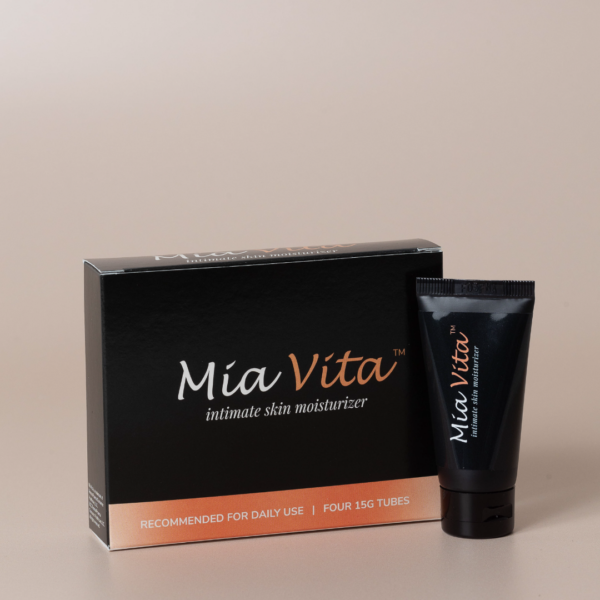
One look at a graph depicting women’s hormones during menstruation and perimenopause confirms we do ride a hormonal roller coaster. From puberty to menopause, women experience fluctuating hormones every month and varying physical and mental side effects of said roller coaster. Brain fog and insomnia, anyone? But what hormones are responsible for these twists and turns, and how exactly do they affect us? Prepare to demystify the hormone roller coaster and learn to manage your recurring symptoms with greater ease.
Women’s hormones during the menstrual cycle
Women’s bodies produce more sex hormones after puberty, including estrogen and progesterone, the two primary hormones responsible for maintaining the reproductive system.
Estrogen helps initiate bodily changes during puberty and the start of your period, while progesterone helps prepare your body for pregnancy by thickening the walls of your uterus.
After puberty, women experience menstruation every 28 days on average, also known as the menstrual cycle. The menstrual cycle includes four phases: menstruation, follicular, ovulation, and luteal.
Menstruation and follicular phases
Your period, or menstruation, lasts about five to seven days, but the exact time varies between women. Estrogen and progesterone levels are at their lowest during your period, and the lining of your uterus sheds if it does not need to prepare for pregnancy.
The follicular phase follows your period and lasts until ovulation, between ten and 16 days. Why is it called the follicular phase? A few days after the start of your period, your body begins a process called folliculogenesis. Follicles (small, fluid-filled sacs) in your ovaries contain “immature” eggs called oocytes. During folliculogenesis, one oocyte starts to develop into a mature egg. You may have hundreds of thousands of follicles, but only one egg matures and is released per menstrual cycle.
Ovulation and luteal phase
Ovulation, your “fertility window,” occurs when the follicle releases a mature egg for fertilization and lasts about 24 to 48 hours. Estrogen levels rise during folliculogenesis but fall after ovulation while progesterone increases to prepare for possible fertilization.
The luteal phase lasts about 14 days in most women. Where does the term luteal come from? After the follicle releases a mature egg, it closes off and forms a “corpus luteum.” The corpus luteum contains cells that release some estrogen, but mainly progesterone, to help prepare the uterus for pregnancy.
If, during ovulation, sperm does not fertilize the egg, both estrogen and progesterone levels fall, the tissue that lines your uterus sheds, and your period begins again. The mature egg stops sending out hormones and fades away, as does the corpus luteum. Because of this fluctuation and subsequent decline in hormones, women tend to experience the most hormone-related symptoms during the luteal phase.
The end of the ride: your hormones during perimenopause and menopause
Perimenopause marks the beginning of the end of ovulation for many women, typically around their mid to late 40s and early 50s. But instead of a gradual decline, reproductive hormones fluctuate. During perimenopause, the ovaries produce less estrogen and progesterone, and, as a result, the menstrual cycle may become longer and heavier or lighter and shorter. A changing menstrual cycle often alerts women that they’ve entered perimenopause along with symptoms like hot flashes, brain fog, and insomnia.
Perimenopause can last as little as six months or as long as ten years. Menopause marks the official end of your reproductive years after you’ve not had a period for twelve consecutive months. Women no longer ovulate at this stage, and reproductive hormone levels remain low.
Cycle syncing: connecting mental and physical symptoms to hormonal changes
Once you understand the mechanisms of your reproductive system, you can associate external symptoms with your internal environment. What does this mean for you and your body?
Well, we know more estrogen contributes to a healthier vaginal environment and better sleep. Less estrogen correlates to a drier vaginal environment, disrupted sleep, and mood swings. Knowing your current menstrual cycle phase can help you predict how you feel, your energy levels, and even your ability to concentrate.
Understanding how your fluctuating hormones impact your day-to-day can help you align your activities based on your cycle, also known as “cycle syncing.” For instance, estrogen increases during the follicular phase, making you more capable of strenuous activity. However, it’s best to stick with gentle exercises like yoga during the luteal phase and menstruation when your hormones are at their lowest.
Menstrual cycle tracker apps like Clue and Flo are becoming more popular to help women manage their symptoms during their menstrual cycles. Unfortunately, for women in perimenopause, a cycle tracker may be less helpful due to the unpredictable nature of your hormones. Instead, the focus shifts to symptom alleviation and management.
How to relieve common symptoms of changing hormones
At its core, cycle syncing involves listening to your body and responding accordingly. Learning to manage the symptoms of your changing hormones can significantly improve your quality of life, no matter your age or menstrual phase.
Common symptoms impacting women during their menstrual cycles and perimenopause are disrupted sleep, altered mood, and vaginal dryness. Studies continue to search for the exact mechanisms that contribute to these changes, yet testimonies from women confirm a direct correlation to hormonal changes.
Sleep
Your hormones, especially progesterone, can directly impact sleep. So, the lower your hormones, the more challenging you may find it to close your eyes at the end of the day. As progesterone falls during your menstrual cycle and fluctuates during perimenopause, you may need more support to get good rest. We recommend the Mia Vita Sleep supplement, which contains L-theanine and GABA, amino acids that help you fall into a deep sleep. It’s also a good idea to avoid alcohol and caffeine as they can negatively affect sleep.
Mood
PMS and PMDD are mood disorders associated with menstruation, particularly low estrogen levels. That’s why, right before your period starts, you may experience more mood swings as serotonin and dopamine (estrogen-affected brain chemicals that contribute to a balanced mood) levels dip.
Studies also found that eating more foods that contain calcium and Vitamin D can help alleviate some low mood symptoms that relate to changing hormones during the menstrual cycle. It’s also a good idea to plan for slower days around your period when you know your estrogen levels will be low. Try to prioritize self-care, go outside for a walk, and eat nourishing, comforting foods.
Vaginal Dryness
Any hormonal changes can alter your vaginal microbiome, which must maintain a balanced, slightly acidic pH to protect it from harmful bacteria and maintain sufficient lubrication. Key to a healthy vaginal microbiome? Estrogen. So when estrogen declines, whether you’re approaching the menopause milestone or in the luteal phase of your menstrual cycle, you may experience vaginal dryness.
Certain products, like tampons, pads, and period cups, can also exacerbate vaginal dryness. To ease these uncomfortable symptoms, use a vaginal moisturizer, like our Mia Vita personal lubricant and vaginal moisturizer which helps your vaginal tissue retain lubrication. As always, if you have particular concerns about hormone-related symptoms or want more help understanding your body’s natural cycles, make an appointment with your healthcare provider.
FemmePharma has been helping women navigate menopause for over two decades. No matter where you are in your journey, you deserve to have knowledgeable, intimate healthcare partners to help you feel your best. Explore our other articles, podcast episodes with women’s health experts, and products to ease your transition into menopause.


